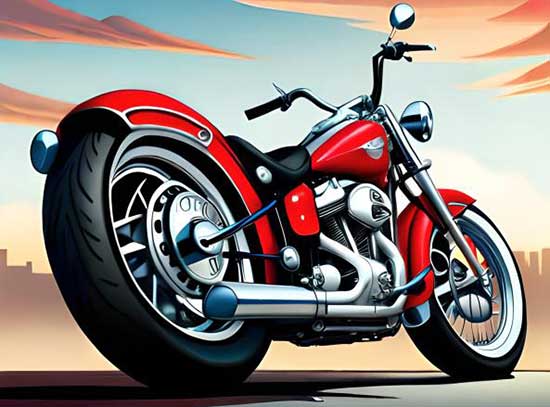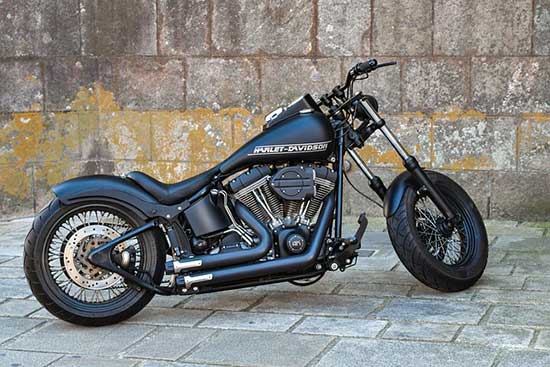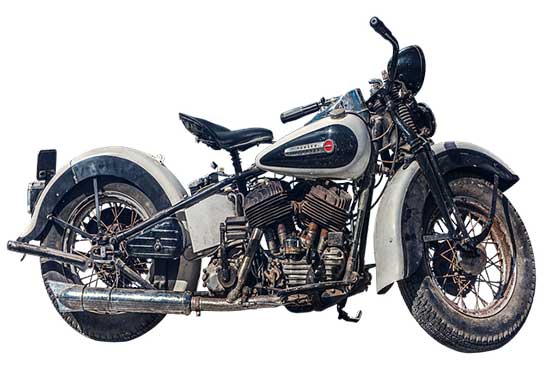Harley Davidson motorcycles are known for their power, performance, and unmistakable rumble of their engines. An essential component that keeps these bikes running smoothly is their battery.
I will provide an overview of Harley Davidson batteries, including their evolution, factors to consider when choosing a battery, popular models, and maintenance tips.
The Evolution of Harley Davidson Batteries
Harley Davidson has a long history that spans over a century. Over the years, the company has continually improved and innovated its motorcycle designs and components, including its batteries.
The Shift from 6-Volt to 12-Volt Batteries
In the early days, Harley Davidson motorcycles used 6-volt batteries. However, as technology advanced and the electrical demands of motorcycles increased, the need for more powerful batteries became evident.
As a result, Harley Davidson made the switch to 12-volt batteries in the 1960s. Today, most Harley Davidson motorcycles come equipped with 12-volt batteries, but older models may still have the original 6-volt battery.
Contents
Factors to Consider When Choosing a Battery for Your Harley Davidson
Compatibility
The first and most crucial factor to consider when choosing a battery for your Harley Davidson is compatibility.
Make sure to check your motorcycle’s owner’s manual or consult with a professional mechanic to determine the appropriate battery voltage and specifications for your specific model.
Battery Type
There are different types of batteries available for Harley Davidson motorcycles, including lead-acid, gel, and lithium-ion.
Each type has its advantages and drawbacks, so it’s essential to research and choose the one that best fits your needs and riding habits.
Battery Life and Performance
Another factor to consider is the battery’s overall life and performance. Look for a battery with a high cold cranking amp (CCA) rating, which indicates the battery’s ability to start your motorcycle in cold temperatures.
Also, consider the amp-hour (Ah) rating, which measures the battery’s capacity and how long it can provide power before needing a recharge.
Maintenance Requirements
Some batteries require more maintenance than others. For example, conventional lead-acid batteries may need regular water level checks and topping off, while maintenance-free batteries don’t require additional care.
Consider how much time and effort you’re willing to invest in maintaining your motorcycle’s battery before making a decision.
Popular Harley Davidson 6-Volt and 12-Volt Battery Models
6-Volt Batteries
Although 6-volt batteries are less common today, they are still available for vintage Harley Davidson motorcycles. Some popular 6-volt battery models include:
- NAPA 740-1829: This reliable 6-volt battery is known for its performance and durability, making it an excellent choice for older Harley Davidson models that require a 6-volt battery.
- PowerSonic CB6V: The PowerSonic CB6V is a sealed, maintenance-free 6-volt battery with reliable performance and long service life.
12-Volt Batteries
Today, most Harley Davidson motorcycles use 12-volt batteries. Some popular 12-volt battery models for Harley Davidson bikes include:
- Harley Davidson AGM Battery: This original equipment manufacturer (OEM) battery is designed specifically for Harley Davidson motorcycles, ensuring optimal performance and compatibility.
- Yuasa YTX20L-BS: The Yuasa YTX20L-BS is a high-quality, maintenance-free AGM battery that provides excellent cold-cranking amps and long service life.
- Shorai LFX36L3-BS12: This lithium-ion battery offers a lightweight, high-performance alternative to traditional lead-acid batteries, with longer service life and faster charging times.
How to Maintain Your Harley Davidson Battery
Proper maintenance is essential for ensuring the longevity and performance of your Harley Davidson battery. Here are some tips for taking care of your battery:
Regular Inspection
Regularly inspect your battery for any signs of damage, corrosion, or wear. Clean the battery terminals and connectors as needed to ensure a proper connection.
If you notice any issues, address them promptly to prevent further damage and potential motorcycle performance issues.
Proper Charging
Maintaining a proper charge is crucial for the health of your battery. Use a smart charger specifically for motorcycle batteries to ensure the correct charging voltage and current.
Avoid overcharging, as this can damage the battery and shorten its lifespan. If your motorcycle is not in use for an extended period, consider using a trickle charger or battery maintainer to keep the battery charged and ready for use.
Conclusion
In conclusion, most modern Harley Davidson motorcycles come equipped with 12-volt batteries, while older models may have 6-volt batteries.
When choosing a battery for your Harley Davidson, consider factors such as compatibility, battery type, performance, and maintenance requirements.
Proper battery maintenance and care will help ensure a long-lasting, reliable power source for your motorcycle.
Frequently Asked Questions
- Can I upgrade my Harley Davidson from a 6-volt to a 12-volt battery?
Yes, it is possible to upgrade your Harley Davidson from a 6-volt to a 12-volt battery. However, this process requires modifications to your motorcycle’s electrical system, including replacing the generator, voltage regulator, and some wiring. It’s recommended to consult a professional mechanic or Harley Davidson specialist for assistance with this upgrade.
- How often should I replace my Harley Davidson battery?
The lifespan of a motorcycle battery can vary depending on factors such as usage, maintenance, and environmental conditions.
Generally, a well-maintained battery should last 3-5 years. However, it’s essential to regularly inspect your battery and replace it if you notice any signs of wear or performance issues.
- How can I tell if my Harley Davidson battery is nearing the end of its life?
Some signs that your Harley Davidson battery may be nearing the end of its life include slow engine cranking, dimming headlights, and frequent need for charging. If you experience any of these issues, it’s a good idea to have your battery tested and replaced if necessary.






